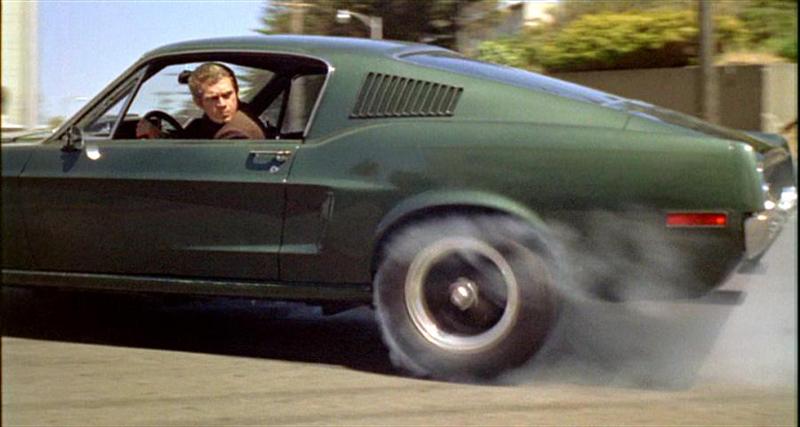 |
BULLITT, starring the uber-cool Steve McQueen, plays tomorrow night (Friday) at the Stateside Theatre (next to the Parmount) at 7:15 p.m. Here are my film notes for this neo-noir classic that features the greatest car chase sequence ever filmed.
Crime films and detective
dramas have always contained an element of action and the hard-boiled school of
American crime films is rife with physical conflict and assorted forms of
mayhem: gun battles, stabbings, strangulations, explosions and the good
old-fashioned knockdown, drag-out fist fight. Criminals in these films are a
vicious, bloodthirsty lot, and it takes a hero who is equally tough to stand up
against the forces of evil, delivering justice with two fists and blazing guns.
The archetypes were
established early. John Huston’s 1941 classic The Maltese Falcon, faithfully adapted Dashiell Hammett’s pulp
novel and made Humphrey Bogart, as private detective Sam Spade, an icon. Bogart
further defined the tough guy private eye in Howard Hawks’ The Big Sleep (1946), again drawing on a literary source, Raymond
Chandler’s often imitated but seldom equaled Philip Marlowe novels.
There are countless other
examples, and the crime /detective genre has remained steady since the 1930s,
while other types of films have come and gone and come back again. The tough
detective, either as an agent of an established police force or as a lone
private operative, has always been a popular film fixture.
Peter Yates’s Bullitt brought several new elements to
the genre. First and foremost was the star, Steve McQueen. McQueen, who died in
1980, was a major film icon of the ‘60s and ‘70s. He personified the detached,
rebel/loner figure, the so-called “anti-hero” that was gaining prominence in
the popular culture of the day. To an entire generation of moviegoers, McQueen
was the living, breathing avatar of cool with a capital “C”.
McQueen parlayed a starring
role in the television western series Wanted:
Dead or Alive into a film career that
included such classics as The Magnificent
Seven (1960), The Great Escape
(1963), The Cincinnati Kid (1965) and
The Sand Pebbles (1966). McQueen was
at the height of his popularity when he made Bullitt and he stars in the title role as the burned-out detective
Lieutenant Frank Bullitt, a man who is good at his job, but who has doubts
about why he continues to do it.
In the course of the film,
Bullitt is called upon to protect a key witness in an upcoming trial of a mob
boss. When the witness is gunned down under suspicious circumstances, Bullitt
begins to investigate and finds a path of corruption leading straight to city
hall. The supporting cast is excellent and there are many familiar faces here,
almost a “who’s-who” of 1960s detective films and television shows: Simon
Oakland, Robert Duvall, Don Gordon, Vic Tayback, Norman Fell, and the supremely
unctuous Robert Vaughn, fresh from his stint as Napoleon Solo, television’s Man from U.N.C.L.E. (a James Bond
inspired spy series, for those of you under 50).
Director Peter Yates makes
great use of the San Francisco locale, giving the film a gritty, realistic
feel, and it’s those famed streets and hills that give Bullitt its most memorable element: the greatest car chase sequence
ever filmed. Cameras were placed inside two cars (a Mustang Cobra with McQueen
behind the wheel in many shots, and a Dodge Charger), to capture the giddy,
feel-it-in-the-pit-of-your-stomach thrills as the cars hurtle down the steep
hills. It’s one of the great cinematic set pieces of all time, brilliantly
staged and edited by Frank Keller. Bullitt
received two Academy Award nominations: Best Sound and Best Film Editing
(winner) and ranks number thirty-six on the American Film Institute’s list of
one hundred greatest thrillers of all time.
Following the success of Bullitt, McQueen made such other stand
out films as The Thomas Crown Affair
(1968), The Getaway (1972) and Papillon (1973). His last film was The Hunter (1980).
No comments:
Post a Comment